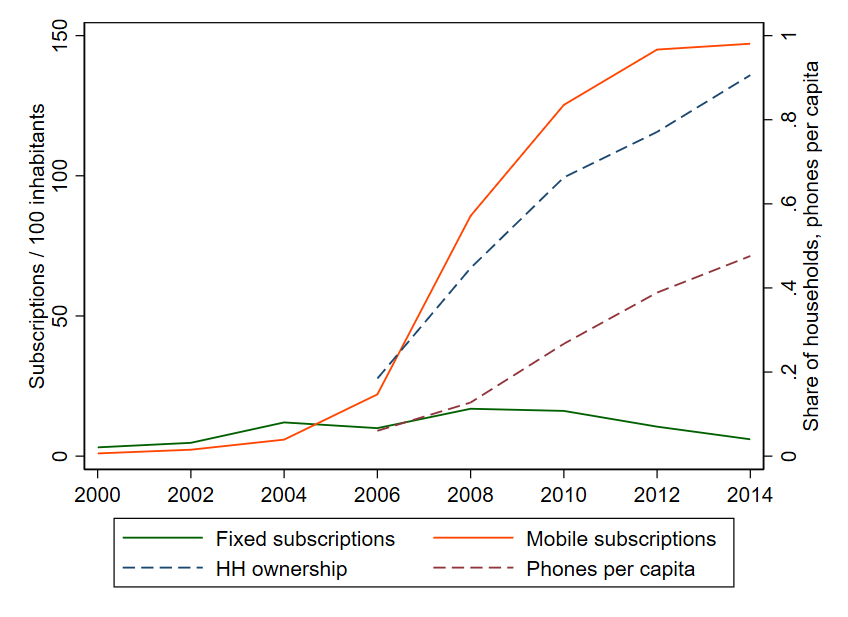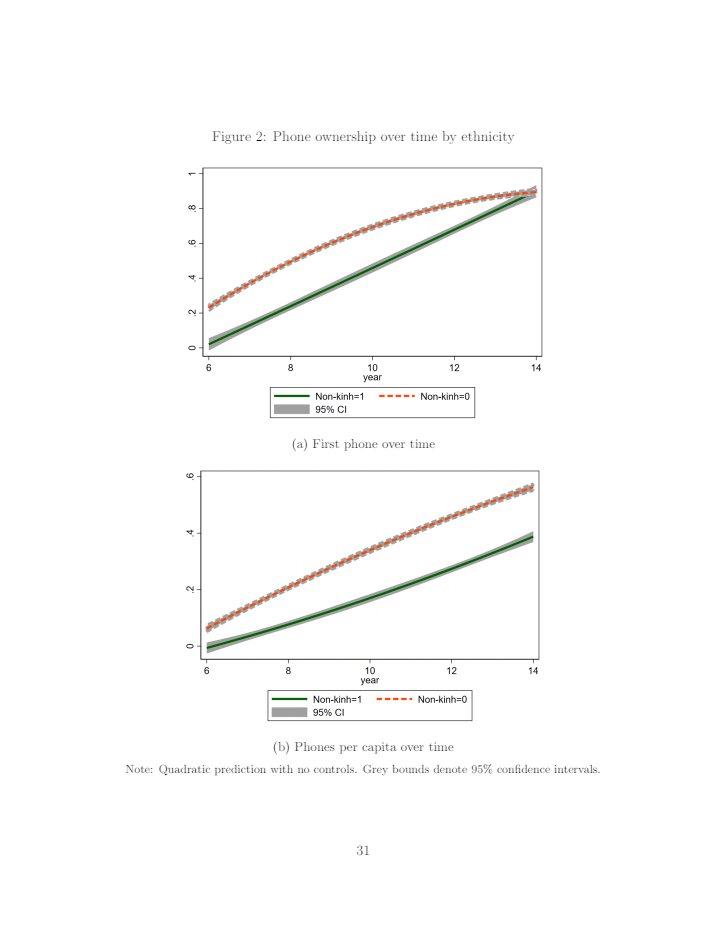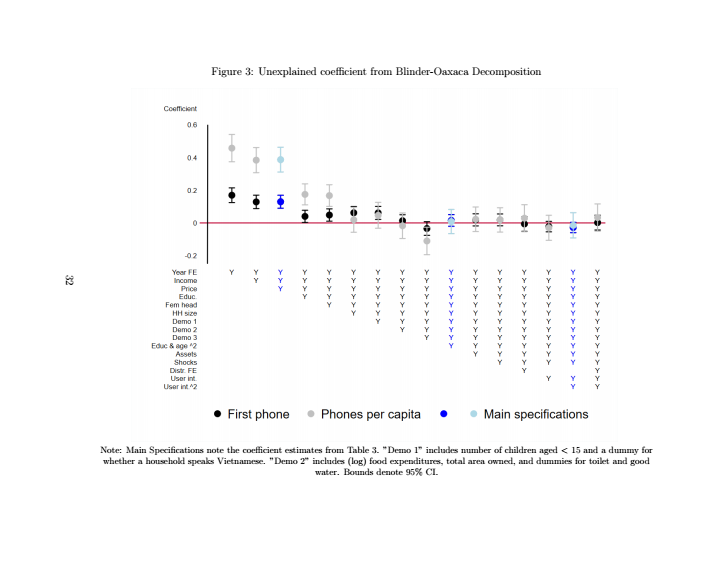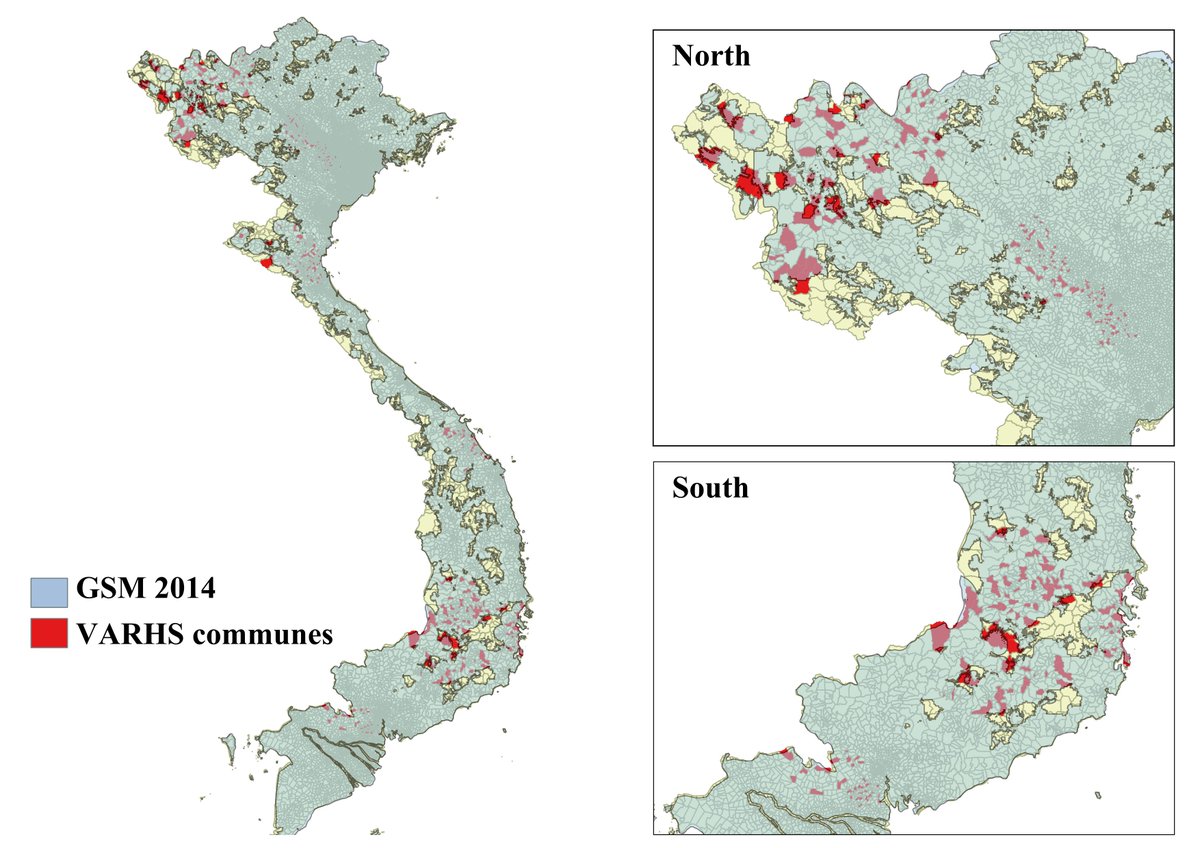Excited to share my #DIYCSAE paper “Ethnic Digital Divide? Evidence on Mobile Phone Adoption” @Oxford_CSAE.  https://abs.twimg.com/emoji/v2/... draggable="false" alt="🧵" title="Thread" aria-label="Emoji: Thread">
https://abs.twimg.com/emoji/v2/... draggable="false" alt="🧵" title="Thread" aria-label="Emoji: Thread"> https://abs.twimg.com/emoji/v2/... draggable="false" alt="👇" title="Down pointing backhand index" aria-label="Emoji: Down pointing backhand index">& full paper (1/9): https://www.dropbox.com/s/plki2obkc3bpfbz/Kaila_Vietnam_phones_Feb20.pdf?dl=0">https://www.dropbox.com/s/plki2ob...
https://abs.twimg.com/emoji/v2/... draggable="false" alt="👇" title="Down pointing backhand index" aria-label="Emoji: Down pointing backhand index">& full paper (1/9): https://www.dropbox.com/s/plki2obkc3bpfbz/Kaila_Vietnam_phones_Feb20.pdf?dl=0">https://www.dropbox.com/s/plki2ob...
The information technology revolution in the 2000’s has created a new large industry and changed our everyday lives in many ways. Policy makers are concerned that underprivileged populations are left out of this development. (2/9)
Closing the "digital divide", the gap between those with and without access to information technology, is considered important (3/9)
I use a panel dataset from Vietnam for 2006-14 to study the digital divide between the ethnic majority group (Kinh) and ethnic minorities (non-Kinh). Is there a “digital divide”? If so, what explains it and are there unobservable barriers to adoption? (4/9)
I find a large digital divide in ethnicity. At the extensive margin the gap narrows over time, at the intensive margin it persists. (6/9)
I find no unobservable barriers to adoption: differences are fully explained by standard factors of demand and by education level. This figure tells it all. Coefficients are unexplained components from Blinder-Oaxaca decomposition. (Thanks @Hanssievertsen for the code!) (7/9)
Phone is a good with network benefits: the more there are people using a phone, the more valuable it is to have one. But, adding proxies for network benefits to the model does not change the result. (8/9)

 Read on Twitter
Read on Twitter





